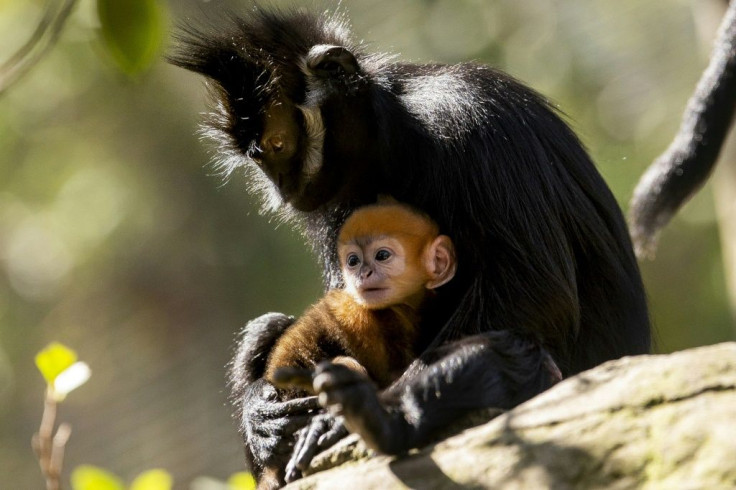Monkey Day 2021: Ways To Celebrate, 7 Interesting Facts About The Primates
Monkey Day, observed every Dec. 14, has arrived yet again. We can take this day as a chance to get to know more these amazing creatures and even help protect them.
It was in the year 2000 when Casey Sorrow and Erik Millikin, college students at Michigan State University at the time, first created Monkey Day, National Today noted. Looking for ways to combat the blues that many people tend to feel around the holiday season, Sorrow and his friends dressed up as monkeys on Dec. 14 and displayed monkey impressions.
But what started as a way to combat the holiday blues has become an event that's celebrated in many countries, from Germany to Thailand and India. Even the Smithsonian Institute and National Geographic promote Monkey Day, and it has since evolved to a celebration of these special creatures.
On Monkey Day, we shift our focus to these unique members of the animal kingdom as well as other non-human primates such as lemurs, tarsiers and apes. Apart from celebrating them, the day also aims to raise awareness about the threats that they are facing.
On this day, people can celebrate by sharing with their family and friends some important monkey facts they know. Some may even throw a monkey-themed party or perhaps learn more about monkeys from various parts of the world, whether by reading or watching documentaries about them.
Others may also choose to go to zoo to see these fascinating creatures live, or perhaps donate to organizations that work to conserve and protect monkeys such as the Pan African Sanctuary Alliance and the Rainforest Trust.
On this day, let's look at some interesting facts about monkeys. (Courtesy: National Today, National Day Calendar, National Geographic and Tree Hugger)
- There are two main groups of monkeys: Old World monkeys like baboons and gelada that live in Asia and Africa, and New World monkeys, such as tamarins and capuchins, that live in South America.
- The Patas monkey is the fastest primate, reaching maximum speeds of up to 35 miles per hour. According to National Geographic, that's as fast as a race horse.
- Although "monkey" is sometimes used to describe primates in general, monkeys are actually different from apes and prosimians like tarsiers and lorises. A particular difference between monkeys and other primates is that most monkeys have tails even if it's just a small nub, Britannica noted.
- Europe only has one species of wild monkey: the Barbary macaque.
- Monkeys vary in size. For instance, the world's smallest monkey, the pygmy marmoset, weighs just a few ounces. On the other hand, the world's largest monkeys, the mandrill, can weigh 77 to about 100 pounds.
- Monkeys have a habit of picking dirt off of each other, but this isn't just their way of grooming each other. It is actually their way of strengthening their social bonds.
- Many monkey species from around the world are already endangered due to various threats and dangers, including hunting and deforestation.

© Copyright IBTimes 2025. All rights reserved.






















